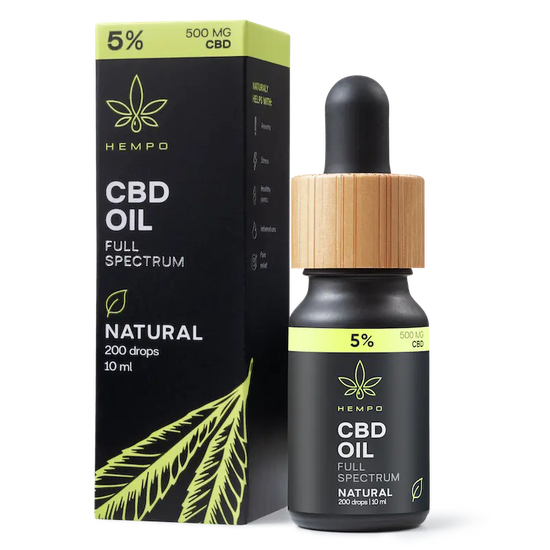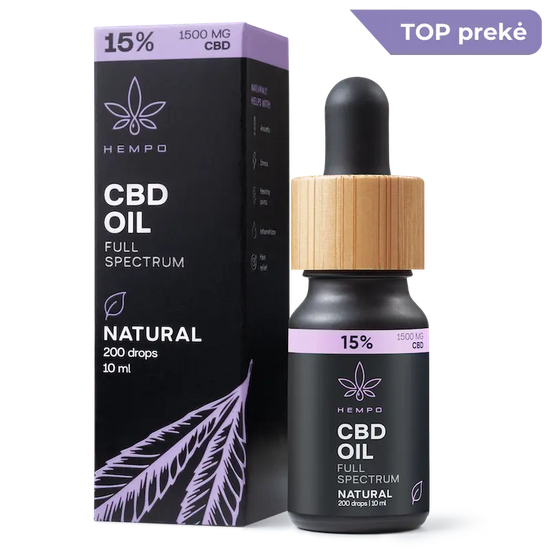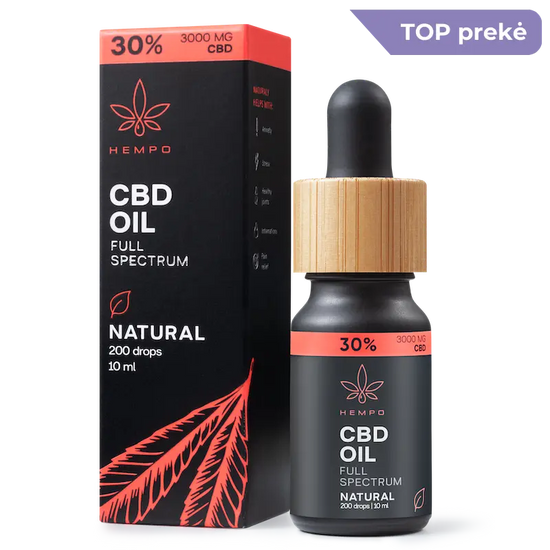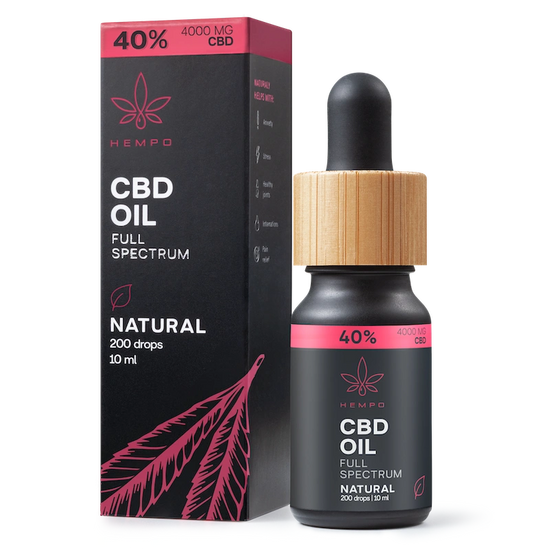Main methods of CBD extraction
Whether you are just starting your CBD journey or have been using CBD products for a long time, you are probably wondering how this beneficial substance, cannabidiol (or CBD) is produced. Although nature plays an important role in the creation of CBD, its extraction process is determined by man, whose knowledge and skills are crucial to the production of CBD products that are loved by many. Table of Contents

CBD producers seeking to ensure quality control of their products prefer the two most important methods of CBD extraction - ethanol extraction and supercritical CO2 extraction.
Different CBD extraction methods can lead to different quality of CBD products, so this article will cover the most commonly used CBD extraction methods. Read on to find out what's in the CBD you're using, and learn more about the most popular CBD extraction methods to help you choose the product that's right for you.
What happens before extraction?
CBD is a substance extracted from various parts of the hemp plant. hemp flowers are usually used for CBD extraction, while the rest of the plant material (called hemp biomass) is often used for other purposes, e.g. for fiber production.
Before the extraction process, hemp plants are cut, dried and crushed. Depending on the extraction method chosen, other additional processes may be required.
In order to extract high-quality and effective CBD oil, it must be extracted from species of hemp with a special genetic profile, which are rich not only in cannabidiol, but also in other cannabinoids. When buying CBD oil, capsules or other CBD products, always look for a manufacturer that informs its customers about the origin of the plants from which their products are made.
Information about the type and origin of the fiber hemp used, as well as quality assurance tests and analysis certificates - these are excellent indicators that reflect the commitment of companies to ensure quality from the first seed to the final product.
Why should CBD be extracted?
Can the benefits of the hemp plant be enjoyed without the complicated extraction process? The answer would be both yes and no. Although hemp is widely used in various industries, the most effective way to enjoy the true effects of CBD is through decarboxylation. Simply put, decarboxylation is the process of heating hemp, which releases the plant's beneficial cannabinoids.
CBD is not the only compound that needs to be extracted in order to enjoy its benefits. You are probably already aware of many other products that use a similar process to extract them, e.g., essential oils, MCT coconut oil, etc.
These products do not come from the ground like crude oil. The extraction process helps to reveal the natural potential of the plant, this also applies to hemp and hemp oil. The resulting CBD oil can be used in a variety of products (within legal regulations), such as cosmetics, tinctures, topical products, chewing gum, gummies, dietary supplements, etc.
CBD extraction methods
So what is the best method for extracting CBD? There are several effective methods of extracting CBD, e.g., oil extraction (using olive or coconut oil) or steam distillation.
Benefits of oil extraction:
- Inexpensive extraction method;
- All natural solvents are used;
- The risk of toxic residues is eliminated.
Disadvantages of oil extraction:
- Chlorophyll may remain, giving the oil an unpleasant taste;
- If they contain plant material, the shelf life of the products is quite short;
- May contain contaminants from the hemp plant;
- Evaporates poorly, so CBD extract may contain lower CBD concentrations compared to other methods, i.e. it is more diluted and less potent;
- Does not extract all cannabinoids present in plant material.

Advantages of steam distillation extraction:
- All natural extraction method;
- The extraction method has been refined in recent years.
Disadvantages of steam distillation extraction:
- Requires much more plant material than other extraction methods;
- The temperature of the steam must be carefully controlled, otherwise there is a risk of spoiling the CBD extract by changing its chemical properties;
- It is difficult to control the extraction of a specific concentration of CBD.
However, CBD manufacturers who want to ensure the highest quality of their products prefer the two best extraction methods - ethanol extraction and supercritical CO2 extraction . Both of these methods are safe and commonly used in the food industry, as well as, as you may have guessed, for CBD extraction.
Ethanol extraction method
Ethanol is used in a variety of foods and beverages, including various nutritional extracts, beer, wine, and even cream. It is also a natural solvent and the main ingredient in this CBD oil extraction method.
Ethanol extraction is a common choice for CBD oil extraction. This process results in an attractive-looking, great-smelling oil for connoisseurs who appreciate the natural taste or aroma of CBD oil.
Note the following steps for this solvent (ethanol) extraction:
- Soaking - in this extraction step, the plant material is completely immersed in an ethanol solution. In order to ensure product quality and a safe environment, it is necessary to use protective equipment and comply with all safety requirements in the early stages of the process.
- Filtration - After soaking the plant material in ethanol, the solid plant material is slowly filtered and removed.
- Cold Factor - Ethanol is cooled to extremely low temperatures (-40°C or lower) to remove all fats and lipids from the hemp extract. Without cold ethanol, the resulting extract would be noticeably less pure and potentially less effective.
- Ethanol Evaporation - the last step of CBD oil extraction removes almost all the ethanol. The US Food and Drug Administration recognizes ethanol as generally safe for consumption, but most CBD extracts contain only trace amounts of the substance.

Notably, ethanol extraction can yield a safer and purer CBD product compared to hydrocarbon solvent extraction. Chlorophyll, the compound that gives all plants, including hemp, their green color, is also removed during both the ethanol and supercritical CO2 extraction processes to improve the properties of the oil.
Other reasons to consider ethanol-extracted CBD include:
- Environmental friendliness - using efficient ethanol recovery systems, ethanol from extraction systems can be purified and reused, thus reducing environmental pollution. Ethanol is derived from plant material and is considered a renewable resource.
- Cannabinoids are preserved - the extraction process reduces the amount of fats, lipids and waxes, while all the beneficial cannabinoids and terpenes are preserved.
- Consistency - Using ultra-chilled ethanol, you can expect the quality standard of CBD products. As long as CBD is obtained from quality plants, consumers should expect a reliable product.
Advantages of ethanol extraction:
- The cheaper extraction process can make CBD products cheaper;
- Due to the low boiling point of some solvents, there is less risk of volatilization of cannabinoids and terpenes due to heat sensitivity;
- More bioavailable results may be obtained;
- A constant concentration of CBD can be obtained.
Disadvantages of ethanol extraction:
- About 10% of cannabinoids can be lost during the extraction method;
- CBD oil may remain contaminated with solvent and contaminants from the original plant material;
- Natural solvents can extract chlorophyll from the plant material, causing the oil to acquire an unpleasant taste;
- Solvent residues can be toxic, so the manufacturer must be very careful to completely remove the solvent during the evaporation step;
- Solvents are flammable.
Supercritical CO2 extraction method
This clean, safe and environmentally friendly method has been used for decades to extract CBD from hemp grown in most parts of the world. CO2 extraction is used not only for hemp products, but also for extracting hops in beer.
Supercritical CO2 extraction method has long been the main method for CBD extraction for several reasons, such as:
- Safety - chemical compounds can cause complications. Fortunately, CO2 leaves little to worry about for both producers and consumers. Carbon dioxide is a non-toxic and non-flammable gas that does not affect human health at normal concentrations.
- High concentration - This extraction process produces a stronger CBD extract. Especially when it comes to full-spectrum CBD oil, which contains significantly more other beneficial cannabinoids.
How does this CBD extraction method work?
- Pressurization - CBD is placed in a special high pressure chamber and carbon dioxide is pumped into the extraction chamber. The compressed carbon dioxide begins to extract the desired phytochemicals from the plant. The term "supercritical" means that solvents, when exposed to extreme pressure and temperature, oscillate between intermediate states - solid, liquid and gas.
- Separation - During CO2 extraction, the individual compounds of the hemp plant are separated, so they do not need to be further purified.
- Condensation - after extraction, the CO2 condenses into a liquid form and can be reused for further processing in the future.

In addition, both ethanol and supercritical CO2 separate the hemp oil into its individual components and allow more extraction of a specific cannabinoid. For example, 70% cannabigerol (CBG) can be extracted, and the rest of the mixture consists of other cannabinoids, terpenes, etc.
Advantages of the supercritical CO2 extraction method:
- High quality CBD products are extracted;
- Strong and chlorophyll-free extraction is obtained;
- Manufacturing a safe product without pollutants;
- Extracts more beneficial compounds compared to other extraction methods;
- CO2 is more environmentally friendly than other solvents;
- CO2 does not pose the risks that other solvents do.
Disadvantages of the supercritical CO2 extraction method:
- This can be an expensive extraction method requiring complex equipment;
- Equipment may only be used by trained personnel;
- Due to equipment and training costs, CBD products made using this method tend to be more expensive.
Subcritical CO2 extraction
Subcritical CO2 extraction is an extremely modern and highly effective method of extracting terpenes, ensuring maximum effectiveness of CBD oil. Although it is not as widespread as some other extraction methods, it has a very big advantage - the safe extraction of terpenes without damaging their structure. Few manufacturers are aware of this, so this extraction method is rarely used in practice at the moment.
Subcritical CO2 extraction uses carbon dioxide at lower pressures and temperatures compared to supercritical CO2 extraction. This gentle method preserves the delicate terpenes of the hemp plant, which are critical to increasing the overall effectiveness of CBD products. Due to its less aggressive nature, subcritical CO2 extraction minimizes the risk of damage to heat-sensitive compounds, resulting in a high-quality, full-spectrum CBD extract.
One of the important advantages of subcritical CO2 extraction is the ability to collect more beneficial plant compounds, including terpenes, while avoiding the degradation of heat-sensitive components. This process produces CBD oil that retains a rich terpene profile that enhances the healing properties of the final product.
It is important to emphasize that not all CBD producers use subcritical CO2 extraction due to the specialized equipment, experience or additional production costs required. However, some manufacturers who understand the benefits of this extraction are implementing this process to enhance the effectiveness and benefits of their CBD products.
Subcritical CO2 extraction works best when combined with supercritical CO2 extraction to create the best extraction process for the best possible results. This combination of methods utilizes the advantages of both subcritical and supercritical CO2 methods.
First using subcritical CO2 extraction, terpenes and other delicate compounds are carefully collected, improving the terpene profile of the final CBD product.
The remaining biomass can then be further purified using supercritical CO2 extraction to isolate specific cannabinoids such as cannabidiol (CBD) or other desired compounds. This hybrid method ensures that all the valuable elements of the hemp plant are efficiently extracted and preserved throughout the process.
The combined use of subcritical and supercritical CO2 extraction methods not only increases the efficiency of the extraction process, but also creates conditions for creating a final product that meets the highest standards of quality and efficiency. This innovative extraction method shows the dedication of some companies to provide their customers with the highest quality CBD products, setting new standards in the industry, just like Hempo.
What happens after CBD extraction?
The extraction process can take time, but once the oils cool, you are left with a high-quality, pure CBD extract. CBD extract is very versatile and can be used in the following ways:
- Concentrated Oil - Once pure CBD is isolated and extracted from the hemp plant, it can be mixed with a carrier such as coconut oil to make CBD oil. This oil can be used in a variety of ways and is one of the most popular choices among consumers. You can start feeling the effects of CBD oil in just a dozen minutes.
- Chewing Gummies - CBD extract can be made into delicious gummies, which are a delicious and simple way to enjoy the effects of CBD.
- Remedies for external use - CBD extract, combined with various ingredients, can become an excellent cream, lotion or balm that can be applied to the skin to help relieve various muscle problems /joint pains, moisturize the skin, treat acne scars and more.
In addition, CBD extracts can be of three different types, such as:
- Full-spectrum - for those who want the product to contain all cannabinoids (small amounts of THC, CBD, terpenes) and other natural compounds of the hemp plant, it is best to choose full-spectrum CBD . All these components work together synergistically and cause the "Entourage effect" that ensures the effectiveness of this type of CBD oil.
- Broad Spectrum - Broad Spectrum CBD is further purified in the CBD extraction process to remove all THC. Broad Spectrum contains 80-90% CBD with a slight reduction in other cannabinoids, but no THC. This is a great option for those who want to avoid THC altogether.
- CBD Isolate - This THC-free alternative is made by isolating CBD and then refining it into a single compound, resulting in an almost 100% pure CBD compound. CBD isolates are usually colorless and have the lowest potency compared to other types of cannabidiol.
Proper CBD Storage Conditions
For anyone interested in CBD extraction, it is crucial to understand the proper storage conditions for CBD, considering the compound's sensitivity to environmental factors. The main CBD extraction methods, including supercritical CO2 extraction and ethanol extraction, produce CBD products that must be carefully stored to maintain their effectiveness over a longer period. The most important CBD storage conditions are as follows: CBD products should be stored in a cool, dark place, away from direct sunlight and extreme temperature fluctuations. The optimal storage temperature for CBD is typically around room temperature, i.e., about 15-21°C, as this helps preserve the potency and quality of the CBD oil over time. Guidelines for proper CBD storage often emphasize the need to protect the product from air, heat, and light, as these environmental factors can negatively affect the quality of CBD. For example, CBD manufacturers often prefer using amber or dark glass containers for storing CBD products, which are directly related to protecting the CBD from direct sunlight that can degrade cannabinoids. It's also worth noting that the method of CBD extraction can influence how CBD products should be stored. For instance, oil extracted using the CO2 extraction method may be more resistant to temperature fluctuations compared to CBD extracted using the ethanol extraction method.
In summary, proper CBD storage conditions are linked to factors such as temperature, light, and others. Ensuring the right storage conditions is key to maintaining the longevity and effectiveness of CBD products.
Summary
Although you most likely have no plans to start a CBD production business in the near future, you can safely say that you now know the main CBD extraction methods and their differences, and which of these extraction methods produces the highest quality CBD products and how to choose the most suitable product for you.





